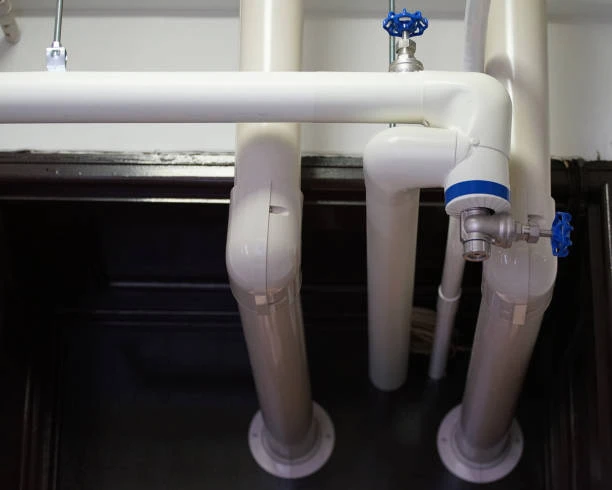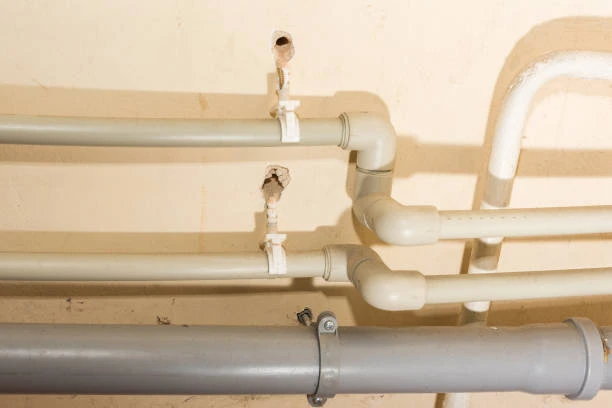Radiation Protection of PEX Piping in Nuclear Power Plant Cooling
Modern nuclear power plants demand materials that can resist not only high temperatures and pressures but also radiation exposure. PEX (cross-linked polyethylene) piping has emerged as a valuable alternative to metal in specific low-radiation and secondary cooling zones. Thanks to its corrosion resistance and thermal performance, it plays a growing role in auxiliary cooling circuits, water delivery systems, and chemical lines. When combined with appropriate tools like PEX cutters, installation becomes both precise and safe.
In this article, we explore how PEX piping meets the strict requirements of nuclear environments, especially regarding radiation protection in cooling systems. We’ll also cover its features, applications, buying tips, installation notes, and comparisons with other pipe types.
Frequently Asked Questions (FAQ)
1. Can PEX pipes be used in nuclear power plants?
Yes, PEX piping is suitable for certain non-primary systems in nuclear facilities, such as backup cooling lines, domestic water supply, and chemical dosing systems. However, it must meet strict radiation and safety criteria.
2. How does radiation affect PEX piping?
High levels of ionising radiation can degrade polymers over time. But in secondary or shielded zones, radiation exposure is much lower. Special grades of PEX are available that offer improved radiation resistance.
3. What is the role of PEX cutters in pipe installation?
PEX cutters ensure clean, square cuts on PEX tubing. Clean cuts are essential for reliable seals, especially in nuclear applications where leaks cannot be tolerated.
4. Is PEX pipe corrosion-resistant?
Yes. One of PEX’s main advantages is its resistance to internal and external corrosion, making it ideal for transporting aggressive cooling water or chemicals.
5. Can PEX be used in high-pressure systems?
Yes. PEX piping can handle pressures up to 160 psi at 73°F (23°C) and lower pressures at elevated temperatures. Always verify system pressure requirements against the pipe’s rating.
Definition and Characteristics of PEX Piping Systems
PEX, or cross-linked polyethylene, is a flexible plastic tubing widely used in plumbing, heating, and industrial systems. Cross-linking refers to the chemical process that strengthens the polymer’s molecular structure, enhancing its resistance to pressure, heat, and chemical degradation.
Key Characteristics:
High Flexibility: Easily routed through tight spaces or around equipment.
Excellent Chemical Resistance: Ideal for carrying cooling fluids and chemical additives.
Thermal Stability: Operates effectively in both hot and cold environments.
Low Thermal Conductivity: Reduces energy loss in cooling systems.
Radiation Resistance (Enhanced Grades): Certain PEX types can tolerate low to moderate radiation levels, especially in shielded areas.
Compatibility with PEX Tools: Quick and secure connections with minimal risk of leakage.
Common Applications and Industries for PEX Piping
Though more common in residential and commercial buildings, PEX has carved out a niche in industrial and energy settings, including nuclear power.
Applications in Nuclear Power Plants:
Auxiliary Cooling Lines: For non-critical cooling systems away from the reactor core.
Chemical Dosing Systems: For transporting additives and cleaning agents.
Potable Water Supply: Within plant facilities, including breakrooms, bathrooms, and offices.
Drainage Systems: For non-radioactive wastewater.
Instrumentation Lines: For pressure, flow, and water sampling circuits.
These systems require high durability, ease of installation, and long-term reliability—all strengths of PEX piping.
Buying Guide: Choosing the Right PEX for Nuclear Facilities
When selecting PEX piping for use in critical infrastructure, especially nuclear energy, precision and compliance are key.
1. Material Type (PEX-A, PEX-B, PEX-C)
PEX-A (Engel method): Offers the highest flexibility and ideal for expansion fittings.
PEX-B: More rigid and slightly more affordable; good for straight runs.
PEX-C: Electron-beam method; moderate performance and cost.
2. Radiation-Resistant Grades
Look for pipes labelled or certified as radiation-resistant. These may include:
Enhanced cross-linking density
UV-resistant and stabilised compounds
Longer service life under ionising radiation exposure
3. Pressure and Temperature Ratings
Match system design with pipe specifications. For example:
160 psi @ 23°C
100 psi @ 82°C
80 psi @ 93°C
4. Colour Identification
Red/Blue: For hot and cold potable water
White: Neutral/cooling water
Black/Grey: Often used for chemical or industrial lines
Colour coding helps with safety audits and maintenance.
5. Quality Tools and Accessories
Use sharp PEX cutters to ensure clean cuts and reduce microcracks. Only use compatible fittings and tools for expansion or crimp connections.
Installation Considerations for Nuclear Facilities
Working in high-safety zones like nuclear power plants requires adherence to strict protocols. Proper installation is not just about performance—it’s about preventing system failure under extreme conditions.
1. Cutting PEX Tubing
Always use professional-grade PEX cutters. A clean, straight cut is vital for leak-free joints. Rough or jagged cuts can weaken the seal and may fail under pressure.
2. Handling and Storage
Store PEX tubing away from direct sunlight and potential radiation exposure before installation. Avoid crushing or kinking during transport.
3. System Integration
Ensure that PEX is installed only in areas within its pressure, temperature, and radiation resistance rating. Use transition fittings when connecting to metal systems.
4. Connection Methods
Expansion fittings: Require pipe to be expanded over a fitting before shrinking to seal.
Crimp/clamp fittings: Use rings and specialised tools for a tight connection.
Always follow the pipe manufacturer’s guidance for the correct tool and method.
5. Inspection and Pressure Testing
After installation, conduct hydrostatic or air testing to confirm joint integrity. Document all installations for regulatory compliance and future maintenance.
PEX vs Other Piping Materials in Radiation and Cooling Applications
| Feature | PEX Piping | Copper Pipe | Stainless Steel Pipe | CPVC/PVC Pipe |
|---|---|---|---|---|
| Radiation Resistance | Moderate (with special grades) | Excellent | Excellent | Low to Moderate |
| Corrosion Resistance | Excellent | Moderate | Excellent | Moderate |
| Thermal Expansion | High | Low | Low | High |
| Weight | Very Light | Heavy | Very Heavy | Light |
| Flexibility | High | Low | Low | Low |
| Installation Time | Fast | Slow | Slow | Moderate |
| Cost | Moderate | High | Very High | Low |
| Tooling Required | PEX cutters, expansion/crimp | Pipe cutter, soldering gear | Welding tools | Solvent cement, cutter |
While metal pipes dominate in reactor zones, PEX is ideal in auxiliary systems, where flexibility, corrosion resistance, and quick installation are crucial.
Conclusion
PEX piping, supported by clean and precise tools like PEX cutters, has proven its worth in supporting systems of nuclear power plants. Though it may not replace stainless steel in primary reactor cooling circuits, it offers significant advantages in secondary cooling, drainage, chemical transport, and building services. With the right material selection, careful installation, and attention to radiation-resistance, PEX provides a lightweight, reliable, and low-maintenance alternative.
As energy facilities modernise and aim for efficiency, PEX piping becomes an increasingly viable solution for ensuring operational safety without compromising performance.
Contact Us
IFAN is a leading Chinese manufacturer with 30 years of experience in producing plastic pipes, fittings, and valves. We specialise in high-quality PEX systems suitable for industrial, commercial, and energy applications, including nuclear facility support systems.
For more information,pls visit our webside https://waterpipefitting.com/
Pls Mailto: [email protected]
Whatsapp: +86 15088288323
Whether you’re looking for radiation-resistant piping, PEX cutters, or complete piping systems, we’re here to help. We respond to all emails and faxes within 24 hours. Contact us today to find the right solution for your project.














Recent Comments